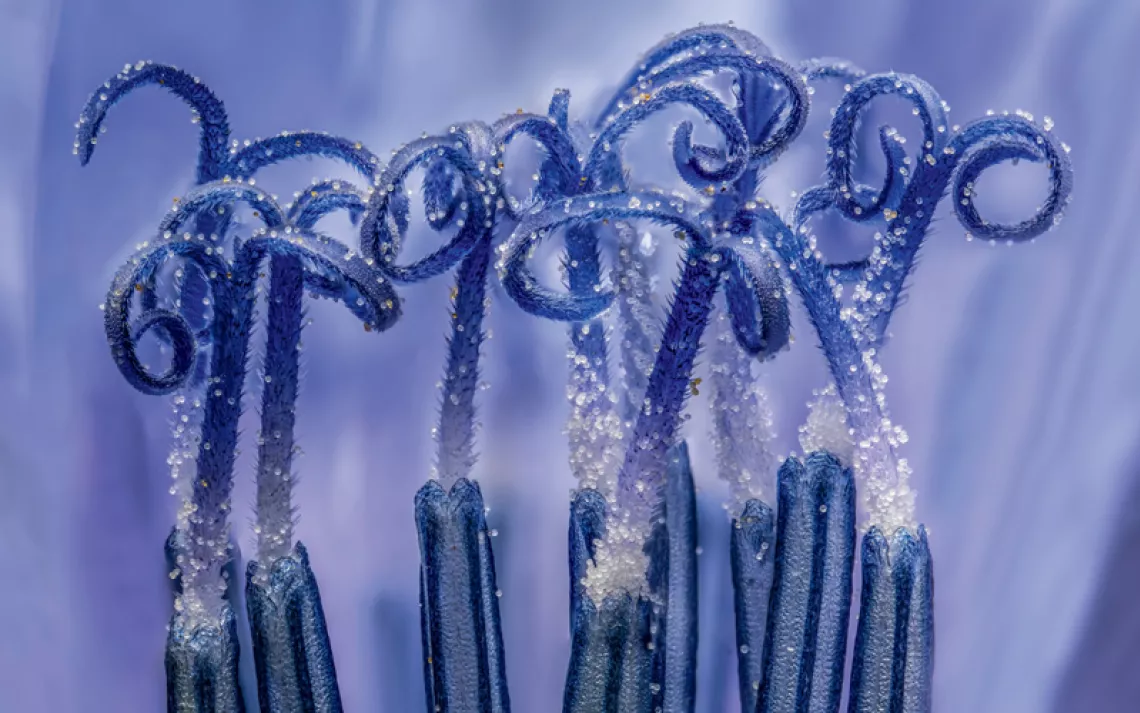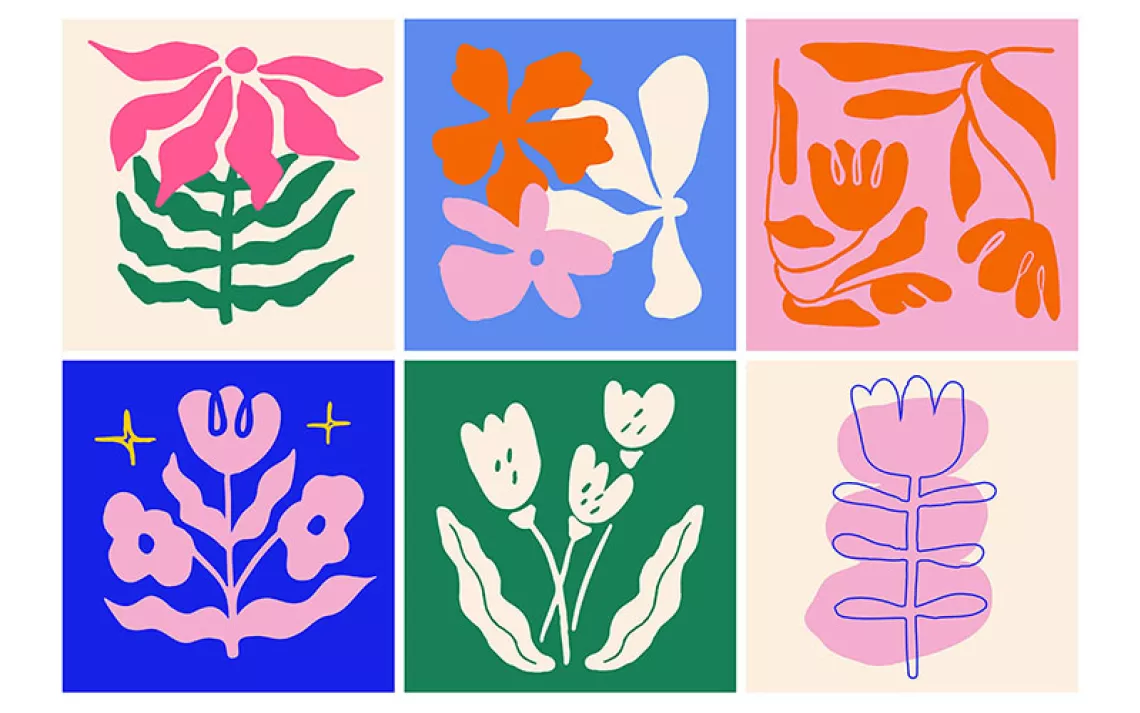Climate Change Is Altering How We Restore California’s Native Grasslands
Superblooms are increasingly at risk

Russian Ridge, managed by Mid Penn Open Space District. | Photos by Justin Luong
California superblooms are a signature feature of the Golden State in early-to-mid-spring, drawing thousands of spectators every year. But the native grasslands that give rise to these florid spectacles are increasingly at risk because of climate change.
Recent research has found that some native grasses in California are starting to react negatively to worsening, long-term drought conditions. Issues with introduced species are further stressing these systems, resulting in lower biodiversity, which can have serious impacts on the entire ecosystem. Those working to protect grasslands are now searching for novel approaches to keep these grasslands healthy and diverse.
California native grasslands play an important role in the state’s financial and ecological health. Grasslands support large, diverse ecosystems. They also support some of California’s largest industries like cattle farming, which is necessary for a significant portion of the state’s agricultural revenue.
Justin Luong, a postdoctoral fellow at the University of California, Davis, and a board member of the California Native Grasslands Association, says that people don’t often see just how beautiful—and essential—these grasses are. “Grasslands are like underground forests,” Luong said. “Grasslands have all of their plant material belowground, which can be just as beautiful if we dig it up, but the really cool and important thing about that is it really helps support long-term and stable carbon storage in California, more so compared to forests.”
Grasslands are able to store carbon for longer than other ecosystems because they are not as likely to be affected by disturbances such as wildfires. Unlike forest ecosystems, most of the carbon storage for grasslands is located underground and in organic soil matter where it is less likely to be burned back into the atmosphere during a wildfire. However, these benefits may be limited if increasing droughts put them at risk.

Grass Mountain

Experimental restoration plots at Younger Lagoon Reserve in Santa Cruz, California
While most California native plants are accustomed to drought conditions, the length and severity of recent droughts are making certain native grasses typically used for restoration no longer a viable option. This means that the only plants left for restoration are the ones that grassland restoration practitioners know can survive droughts. This factor, along with additional environmental stressors, leads to a significant negative impact: a loss of biodiversity.
California is home to one of 36 biodiversity hotspots in the world, the California Floristic Province. Protecting these hotspots, as well as biodiversity overall, is vital to keeping our ecosystems, and human’s relationship to them, functioning properly. Global biodiversity loss is associated with declining crop production, increased spread of infectious diseases, and rising risk of flooding due to habitat loss, among other impacts. The UN Environmental Programme also states that this decline “in nature and biodiversity … will undermine progress toward 35 out of 44 of the targets of [Sustainable Development Goals] related to poverty, hunger, health, water cities, climate, oceans, and land."
This is an issue taking place both nationally and globally. According to a report conducted by NatureServe in 2023 studying biodiversity in the US, around one-third of plants in the nation are at risk of extinction, and 41 percent of ecosystems are at risk of “wide-range collapse.” Threats from reduction in biodiversity are present within many ecosystems, including California native grasslands.
“What we generally find is that higher biodiversity supports higher ecosystem functioning,” said Amy Wolf, an assistant professor in the Integrative Biology Department at the University of Texas at Austin. Wolf, along with researchers from the University of California, Davis, and the University of California, Santa Cruz, conducted a study published in 2021 in PNAS, where they researched several plots of California native grasslands through a variety of drought scenarios. Researchers found that in drought years, while most drought-resistant perennial native grasslands survived intrusion from introduced species, they were less productive. “The biomass overall was lower as you lost diversity,” Wolf said.
This loss, Wolf speculates, could affect herbivores, insects, and pollinators that rely on the productivity of these plants in the long term. Increasing drought not only stresses the loss of biodiversity naturally but also changes how people across the state approach restoration.
“As you get climate change, you get years with greater and greater drought, and you're going to select for species that have more of that drought tolerance, which means you're probably going to see a decline in diversity of the community over time,” said Madeline Nolan, assistant regional habitat program manager at the Washington Department of Fish and Wildlife.

Drought structures for grassland restoration experiments at Younger Lagoon Reserve
California experienced a significant five-year drought from 2012 to 2016. Recently, a couple of consecutive dry years have kept much of California in anywhere from severe to exceptional drought, according to the US Drought Monitor. With climate change leading to increasing droughts across the state, those looking to restore grasslands will have to make changes to how these treat restoration sites.
“There needs to be a little more conversation about not only understanding how climate change is going to alter plant communities and animal behavior but also how that is going to change how we practice restoration,” Nolan said. “I think there needs to be some thought about how current practices need to change to account for how we’re going to deal with lack of water or more extreme events.”
Nolan studied drought and introduced species in native California grasslands during her PhD at the University of California, Santa Barbara, to find better, more stable restoration techniques that would protect against biodiversity loss. While there are promising avenues for improvement, she says changing the mindset around restoration may be more difficult than it seems. In her experience, people can be defensive and often get stuck using restoration systems that worked well in the past. However, as climate change continues to affect how we approach much of the natural world, restoration practices, in turn, will be affected. And according to Nolan, the time to be making those changes is imminent.
“We need to be doing it,” Nolan said. “We need to be doing it now, because we’re feeling the effects now.”
 The Magazine of The Sierra Club
The Magazine of The Sierra Club



